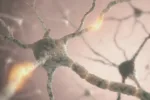Does Opioid Abuse Affect Your Mental Health?

In recent years, it has become apparent that opioid misuse is an epidemic plaguing countless people. Whether they chose it or not, opioid prescriptions became so popular among medical doctors that thousands of people suddenly received prescriptions. Without initial proper medical management and regulation, it blossomed into the ugly epidemic the world faces today.
What are opioids?
Opioids are narcotics, drugs that interact with the nervous system in order to treat and reduce acute pain. Most commonly, opioids are prescribed to help people recover from injuries or surgeries, or, in limited cases, are used for the treatment of chronic pain. However, the longer one takes an opioid, the greater the risk for dependence and addiction.
Common opioids include:
- Oxycodone
- Oxymorphone
- Morphine
- Codeine
- Fentanyl
- Heroin (used solely for recreation, no medical use)
Because they dull pain and, in some, produce a sense of euphoria, opioids can be highly addictive. Their potency decreases the length of time it takes to become dependent, and tolerance develops easily the longer one relies on these substances.
How does opioid abuse develop?
Everyone who takes opioids is at risk for developing addiction – family history and genetics, environment and influences, plus a number of other factors play a role in whether or not an addiction develops, but because of the chemical makeup of opioids, it is true that anyone who takes them is at risk.
According to Mayo Clinic, “Opioids trigger the release of endorphins, your brain’s feel-good neurotransmitters. Endorphins muffle your perception of pain and boost feelings of pleasure, creating a temporary but powerful sense of well-being.” Once these sensations wear off, it’s common to desire those effects again, seeking out another dose.
When these habits begin to show, it is crucial to tune into your body – are you seeking another dose for the sake of relieving pain from a surgery you’re recovering from? Or are you seeking opioids for the way it feels (and not for the way it’s helping you recover.)
It is this desire for a repeating sensation of euphoria/relief that leads many down the slippery slope of addiction.
It begins with tolerance when you need more of the substance to get the same effect; then habits develop into dependence, where your body not only has a high tolerance but suffers from withdrawal symptoms when it goes without the substance. Addiction usually follows quickly, where, despite negative consequences, you cannot stop using and satisfying the addiction becomes a main priority in your mind.
Symptoms of opioid abuse
A number of symptoms will present themselves as addiction develops and opioid abuse worsens. These symptoms include:
- Attempting to stop taking opioids without success
- Taking more of the prescription medication than was instructed
- Using someone else’s opioid medication
- Seeing numerous doctors in order to get more refills than needed
- Withdrawing from activities you enjoyed because your mental space is focused on satisfying the habits of the addiction
- Experiencing withdrawal symptoms when you miss a dose or try to stop using
- Falling behind in work or school due to substance use habits
- Suffering from physical symptoms of abuse, but continuing with use even so
- Spending large amounts of time using, or recovering from, opioids
If you notice some, or many, of these signs present in your life, it may be time to seek treatment to help you regain physical and mental health.
The effect of opioids on mental health
When talking about the side effects of any medication, the discussion most often revolves around physical health. Talk of nausea, dizziness, respiratory depression, etc. is often touched upon when discussing the expected side effects of opioid use, but rarely are mental health concerns addressed.
This is important to note because opioids are known for causing decreased mental health.
For example, “… some research suggests that simply using prescription opioids can put one at higher risk for depression. In one study at St. Louis University, researchers found that 10 percent of over 100,000 patients prescribed opioids developed depression after using the medications for over a month.”
Interestingly, these individuals were prescribed opioids to treat physical symptoms of pain and had never before been diagnosed with depression.
Additionally, for those who struggle with heroin addiction, research shows that “[t]his addiction can lead to the feelings of hopelessness, despair and guilt often associated with depression, and researchers have estimated that 48 percent of people dependent on the drug will also experience depression.”
Finally, one intensive study determined that “Mental health disorders are widely accepted as risk factors for opioid use and opioid use disorders, but our review suggests that opioid use (particularly over long periods of time and in increasing doses) might also increase the risks of developing depressive, bipolar, and anxiety disorders.”
These studies prove that not only should one consider the physical health consequences of opioid use, but one should note the mental health dangers continued opioid abuse is guaranteed to produce.
Opioid abuse treatment
Whether recreational or prescription use has led to the development of opioid addiction, with the right help, mental and physical recovery can be possible. Treatment programs, like those offered through Silvermist Recovery, will provide you with the tools you need to get your life back on target today.
To learn more about our recovery programs, contact Silvermist Recovery by calling (412) 561-9558 today.






